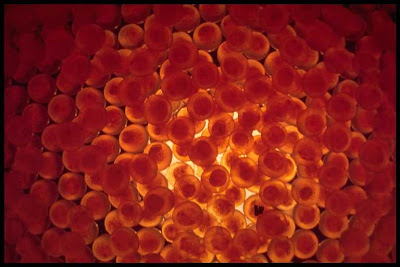 |
| Cod have long been in the news regarding their fishery status, and are included in the Northeast US groundfishery that was this week declared a disaster. (Source) |
Most recently, ongoing low returns of chinook salmon in Alaska prompted a disaster, as did negative impacts of freshwater flooding on oyster and crab populations in Mississippi. Additionally, the Northeast groundfishery (e.g., cod, haddock, flounder, and others) covering six Northeast US states was declared a disaster, but this is somewhat the culmination of several years of concerns in the Northeast groundfishery. Fishers have been doing their part to harvest under dynamic and often decreasing catch limits, yet the fish populations have not recovered as many have hoped, and as some predicted. If fewer fish are removed, more should remain. And this growing remainder should help the population to grow, right?
 |
| Number of NOAA declared fishery disasters since 1994. |
I'm afraid if it were that simple, many fisheries scientists would be out of work. But given that the answer of non-recovering stocks is not well understood, I figured I would take a few paragraphs to try and begin to highlight reasons some scientists have posited as to why stocks don't recover when fishing pressure is reduced. Much of what I'll cover is tied to the groundfishery in the Northeast US; however, these explanations should not be unique to that fishery.
Predicting that a fish stock recovers rapidly after depletion assumes that the few individuals remaining are up to the task of replacing more than their typical share of the population. However, we know that overfished stocks tend to be characterized by those unselected by the fishery. We also know that fishing often acts opposite of natural selection: regulations and fisheries are often designed to take the largest, most productive individuals of the stock, leaving behind those that grow slowly and reproduce the least. Although those remaining often have more resources available and can compensate somewhat, any decreases in age and length at maturity are often coupled with increases in natural mortality (when investing in reproduction, growth often slows), meaning life gets harder for those left behind.
Hutchings examined these changes in cod in a 2005 paper. He also suggested that first time spawners—of which many are young fish in cases of high exploitation—are less successful, meaning they produce fewer and smaller eggs than older, larger, repeat spawners. Ultimately in question are the nature of these changes: are they phenotypic and therefore reversible, or are they genetic and non-reversible (on scales meaningful to management).
 |
| Increasingly, researchers are finding that the eggs of young, first-time spawners are smaller and have lower success rates than eggs of larger, older females. (Source) |
A second way to think about failed stock recoveries moves us out of the species mindset and requires us to think about the ecosystem. Frank and colleagues (2001) examined this (also in Northeast groundfish), claiming that as a result of fishing, the entire food web was restructured. In a nutshell, the removal of predators caused the planktivores and macroinvertebrates to greatly increase—although they also report on subsequent decreases of these groups as zooplankton resources have dwindled. The authors do provide hope, however, as they claim this food web restructuring is reversible.
 |
| Stocks can likely rebuild, but we may never see the large, easy, near-shore catches of long ago. (Source) |
These are only two general explanations as to why populations don't recover rapidly, and it is likely that additional factors are at play, both as driving forces and as interactive effects with existing factors. For example, climate and environmental changes also pose an ongoing threat, as increased variability may make it harder for species to have strong consecutive year classes. But the message is clear: ecology is complicated and messy, and simply reducing or stopping harvest might not be enough for populations to bounce back. Fortunately, several other studies provide hope that many of the population changes are phenotypic—meaning they are reversible. However, 'reversible' only permits the possibility that things can bounce back, and is far from a guarantee that we'll ever see the good old days.
Steve Midway
References
Frank, K.T. et al. 2001. Transient dynamics of an altered large marine ecosystem. Nature 477:86–89.
Hutchings, J. A. 2005. Life history consequences of overexploitation to population recovery in Northwest Atlantic cod (Gadus morhua). Canadian Journal of Fisheries and Aquatic Sciences 62: 824–832.

No comments:
Post a Comment
Please leave a professional comment to create discussion about this topic. We reserve the right to remove any comment.